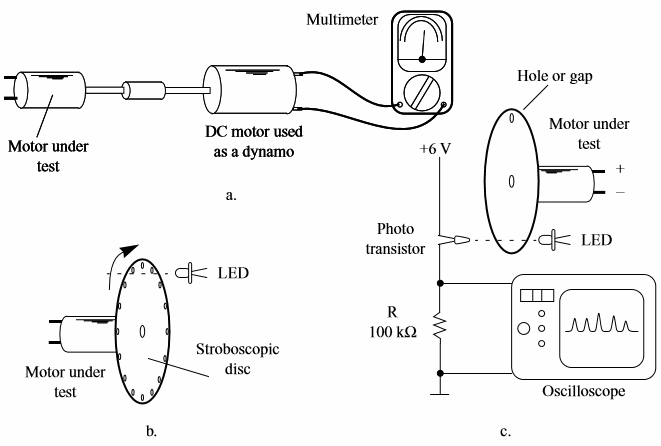In many applications is necessary to measure the speed of a motor when driving or even when the motor is unloaded.
There are several simple techniques to do this task. Figure 1 shows the circuit and arranjments for this task.

a) Using a motor as dynamo
The voltage generated by the motor used as dynamo depends on the speed of the motor under test. The motor used as dynamo can be calibrated in termos of rpm using standards rotary sources.
b) Using a stroboscopic LED
A stroboscopic light source is used to iluminate a stroboscopic disc. When motion is "freezed" by changing the frequency of the stroboscopicic light source is possible to determine the RPM of the disc and so of the motor.
c) Using the oscilloscope
With a simple circuit that "senses" the presence of a shaft or a hole in the disc coupled to the motor under test, it is possible to measure preciselly the RPM of a motor with the oscilloscope.
d) Using a frequency meter
This figure shows how the oscilloscope can be replaced by a frequency meter to determine the speed of a DC motor (or any other rotary motion source).
e) Using a multimeter
The circuit shown here converts the pulses produced by a magnet when passing near the reed switch into a proportional voltage. This voltage can be read by a common multimeter and associated to the speed of the motor. Previous calibration must be done.
f) Using a gear box
Coupling the motor under test to a gearboox with a very high reduction of speed rate it is possible a visual count of the revolutions of the final shaft. Multiplying this speed by the reduction rate of the gear box you can determine the speed of the motor under test.
Formula:
RPM = R x n
Where:
RPM = number of revolutions of minutes of the motor under test
R = reduction rate of the used gearbox
n = number of revolutions of the shaft of the gearbox



